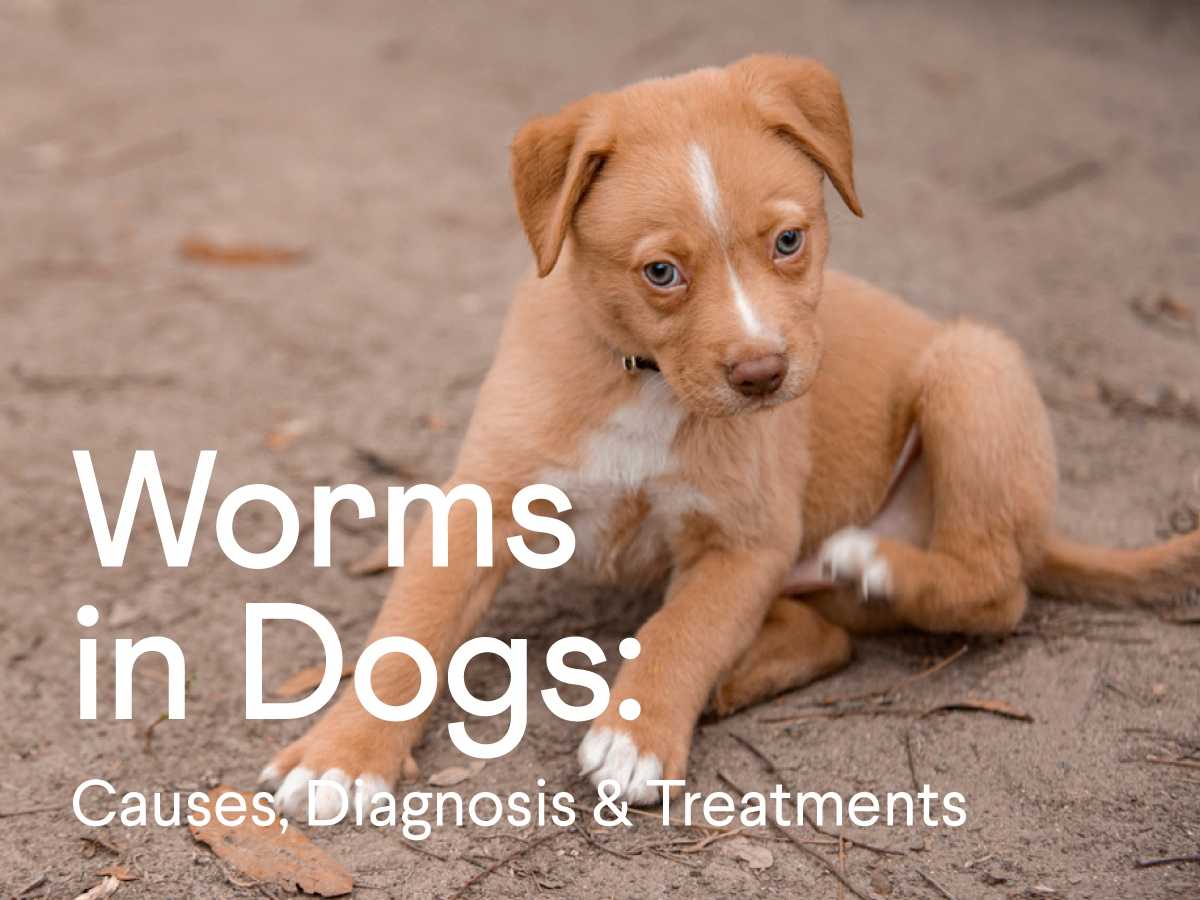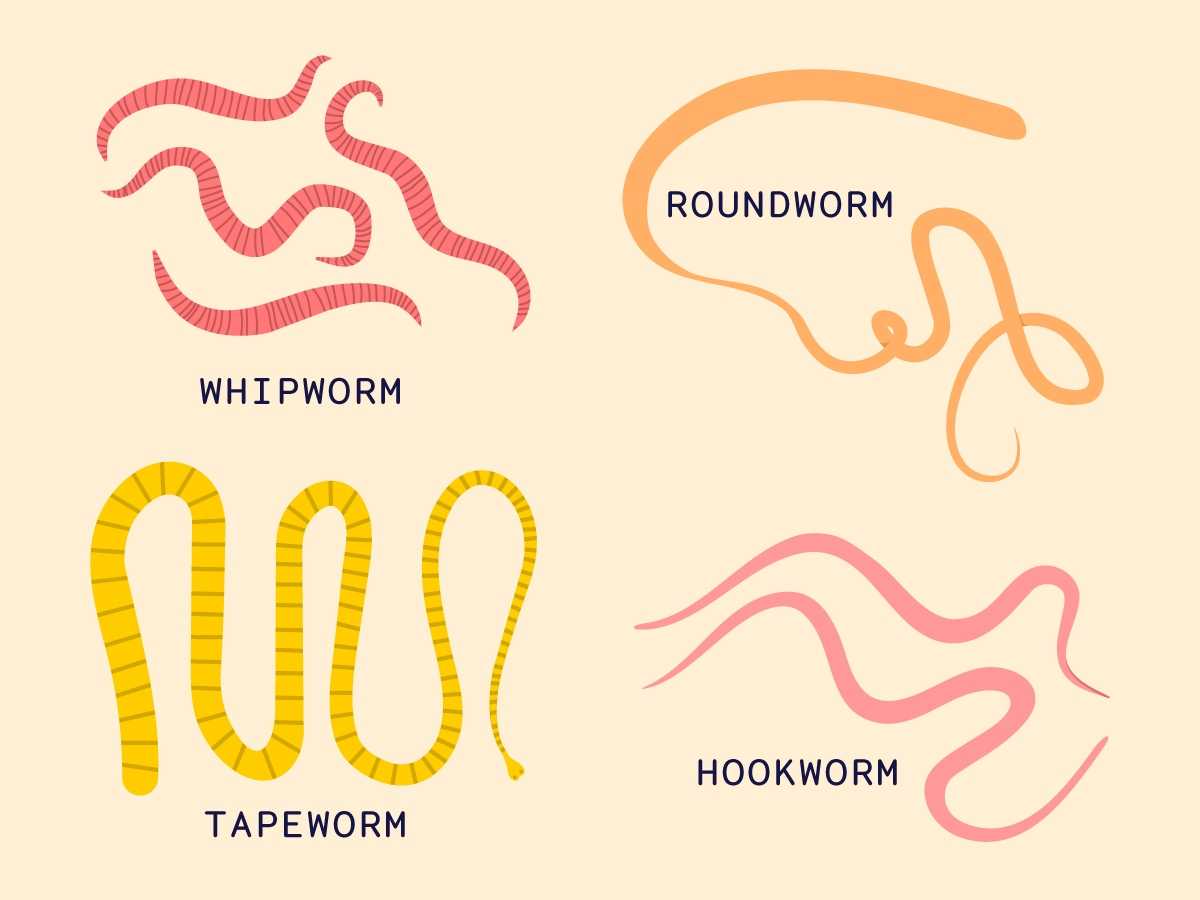
Worms In Dogs: Causes, Diagnosis & Treatments
Worms in dogs can be scary, but Finn has the info you need to know about their causes, diagnoses, and treatments so you can seek the proper care for your pet
If you’ve ever had a puppy, you already know how shocking it can be to see a worm wriggling around in their poop. There’s an immediate “ick” factor, and it can be enough to make you want to run your dog right to the vet for emergency treatment.
Luckily, worms in dogs are usually relatively easy to treat, especially if you catch them early. We’ll get down to the basics, so you know what to look for and what you can do about it.
What Are the Different Types of Worms in Dogs?
While we often talk about worms in dogs as one large category, your dog could be exposed to different varieties of worms. Understanding these worms is important because each has a slightly different treatment method and causes its own unique side effects.
Let’s look at gastrointestinal parasites specifically because these are the most common type of worms in dogs. We’ll also touch on one other kind of parasite, heartworm, which can be the most lethal.
Hookworms
Several types of hookworms can cause parasitic infections in dogs, depending on your region. They can cause anemia because they attach (or “hook”) themselves to your dog’s intestinal tract walls and proceed to ingest large amounts of blood.
These intestinal worms can also cause malnutrition and nutritional deficiencies, especially when they are present in large quantities.
Your pet can pick up hookworms in two primary ways — from their environment (licking their paws after coming into contact with infected stool or contaminated soil) or, in some cases, puppies contract them from nursing on their mother’s milk. Hookworms produce prolific amounts of eggs, hundreds per bowel movement, so the risk of infection is high.
Roundworms
The name roundworm comes from its shape.
Roundworms are the most common type of worms in dogs. Many puppies are born already infected with roundworm, which they can get from their mom while still in the womb. They can also pick it up through contact with infected dog poop, as well as poop from raccoons, cockroaches, birds, rodents, and earthworms.
Roundworms thrive in the intestines, floating freely and feeding off any partially digested contents they find. If not caught and treated quickly, roundworms can soon lead to poor growth and nutrition and even be fatal in certain situations.
Tapeworms
Unlike other worms in dogs, tapeworm infections happen due to your dog eating fleas infected with the parasite. Once your dog has eaten the flea, the egg hatches in their GI tract and attaches itself to their intestinal lining.
Although they get a bad reputation, most species of tapeworms are not often a significant threat to your dog until the infection progresses. When they start to pass in your dog’s stool, they usually look like grains of rice.
Tapeworms are the most likely of the worms in dogs to cause your dog to “scoot” their butt across the ground, as infections can cause significant itching.
If you see your dog start to do this, make an appointment with your vet, as tapeworms are only one of the reasons they may be performing this behavior.
Whipworms
Whipworms are another type of worm in dogs that don’t cause many symptoms until the infection has grown much more extensive.
These parasites tend to live at the beginning of the large intestine (the cecum) and the colon, where they can more easily pass their eggs into your dog’s stool. Once the infestation has gotten severe, you may notice weight loss, bloody diarrhea, and anemia.
Unfortunately, whipworm eggs can live outside of their host for five years in warm, moist environments. This is why picking up after your dog is crucial.
Heartworm
Heartworm is the most concerning of the parasitic infections dogs can pick up, as it is the most likely to be fatal even to adult dogs. Heartworm is transmitted by mosquito bites, which makes it extremely difficult to avoid and is why veterinarians are so insistent on getting your dog on heartworm preventatives.
What’s so scary about heartworm is where it occurs in your dog?
While most other worms in dogs attach themselves to the intestines, heartworms live in the blood vessels that deliver blood to the heart and lungs. They can grow and multiply rapidly and infect the heart, causing serious side effects like heart failure, severe lung disease, organ damage, and death.
What About Ringworm?
Although it has “worm” in its name, ringworm does not include worms as other “worm” parasites do. Ringworm gained its name from the shape of the fungal infection, which forms a scaly patch that looks like a worm forming a circle.
There are no preventative medications like with the other parasites we talked about in this article, and diagnosis and treatment look very different as well.
What Are Signs of Worms in Dogs?

A veterinarian should see all dogs in the first few days after being adopted. Many puppies will receive a basic prophylactic dewormer, even if they don’t have any apparent parasites.
However, worms in dogs can also happen to older pets or show up between vet visits. There are a few signs to be on the lookout for that may indicate they are dealing with a parasitic gastrointestinal infection.
If you see any of these, call your veterinarian to schedule an appointment and bring a fresh stool sample so they can test it and find out what type they may have.
- Abdominal pain
- Bloating (puppies with worms can have a “pot belly” appearance)
- Blood in their stool
- Dehydration
- Diarrhea
- Dull coat
- Lethargy
- Nutritional deficiencies
- Scooting
- Vomiting
- Weakness
- Weight loss
Signs of heartworm are slightly different since the infection affects the heart and lungs. Look out for:
- Coughing
- Exercise intolerance
- Labored breathing
- Pale gums
- Sudden weight loss
What Are Treatment Options for Worms in Dogs?
The treatment for worms in dogs often depends on the type of worm present. To diagnose that, your veterinarian will need a fresh stool sample which they’ll look at under the microscope.
This type of test is known as fecal floatation, which causes any intestinal parasite eggs present in the dog feces to float to the top. The eggs are easily identifiable based on their shape and size, and the type of parasite helps guide your vet toward finding the appropriate treatment.
While the medication used can vary, a worming treatment for most parasites includes an initial dose of dewormer medication and a second dose a few weeks later to catch any stragglers.
The exception to this rule is heartworm, which requires much more extensive treatment that can be expensive and lengthy. Heartworm is diagnosed by a blood test, but the treatment itself can have significant side effects, and dogs going through treatment will need to be confined for its entirety.
Catching them early is vital for successful treatment, so vets often recommend heartworm tests as a yearly preventative.
However, like most medical issues, prevention is the best treatment. Keep up with your pup’s yearly preventative vet visits, and keep them on the recommended flea and tick preventative medications year-round if possible. It’s crucial to put your dog on heartworm preventative as well, especially during the months that mosquitoes are the most prevalent in your area.
Can Humans Get Worms, Too?
After the immediate panic of seeing worms after your dog has gone to the bathroom, many people’s next thought is their own risk.
Unfortunately, doctors have found that roundworms, hookworms, and tapeworms are “zoonotic,” meaning they can pass from your pet to you. Luckily, avoiding infection isn’t difficult, provided you know how to reduce your risk factors.
Worms in dogs are passed from their body to the environment in their stool. Unfortunately, this means that anywhere your dog may have access to has the potential to have parasite eggs (larvae), which can take over quickly.
In addition, these eggs can live for weeks or even years outside of their host, which makes it challenging to avoid your own infection if your dog has been diagnosed with worms.
For adults, avoiding these parasitic infections is as simple as following good hygiene practices. In most cases, all you need to do is wash your hands after touching your pet, especially before eating. It can be more difficult for children, as younger kids often don’t think before putting their hands in their mouths. That’s why you’ll need to thoroughly disinfect your home and anything your dog may have touched and monitor your child when they are around them during treatment.
The Tail End
Worms in dogs may look scary, but they can be easily treated if caught quickly in most cases. Be on the lookout for any new signs or symptoms of worms, and help stay ahead of it by using appropriate prevention techniques and medication.
Most dogs will deal with worms at some point in their lives, especially when they’re puppies, but you now have the right knowledge to minimize the risk so you can get back to snuggling your pup without worry!
Sources:
Gastrointestinal Parasites of Dogs - Dog Owners | Merck Veterinary Manual
Heartworm Disease in Dogs - Dog Owners | Merck Veterinary Manual







Comments: